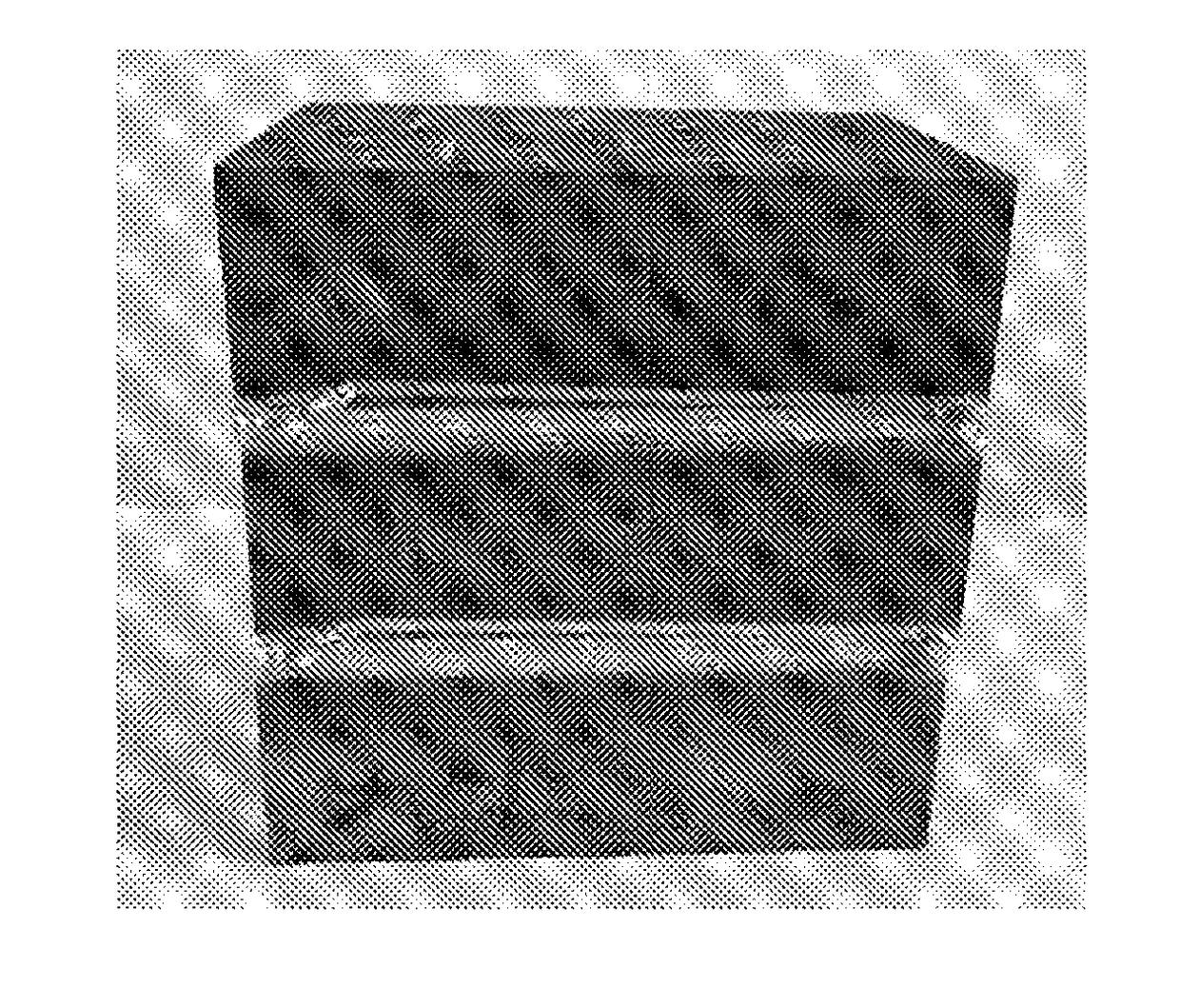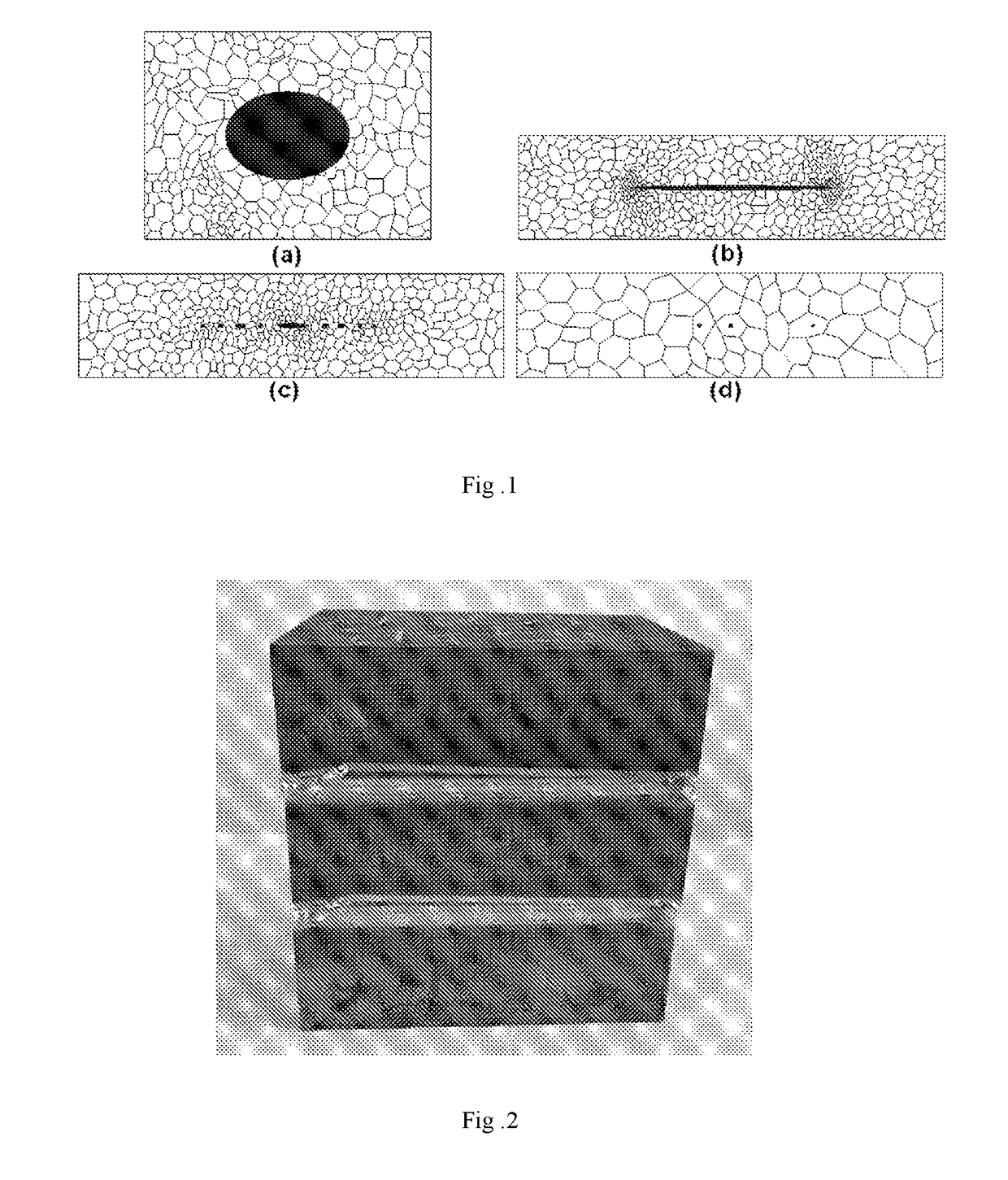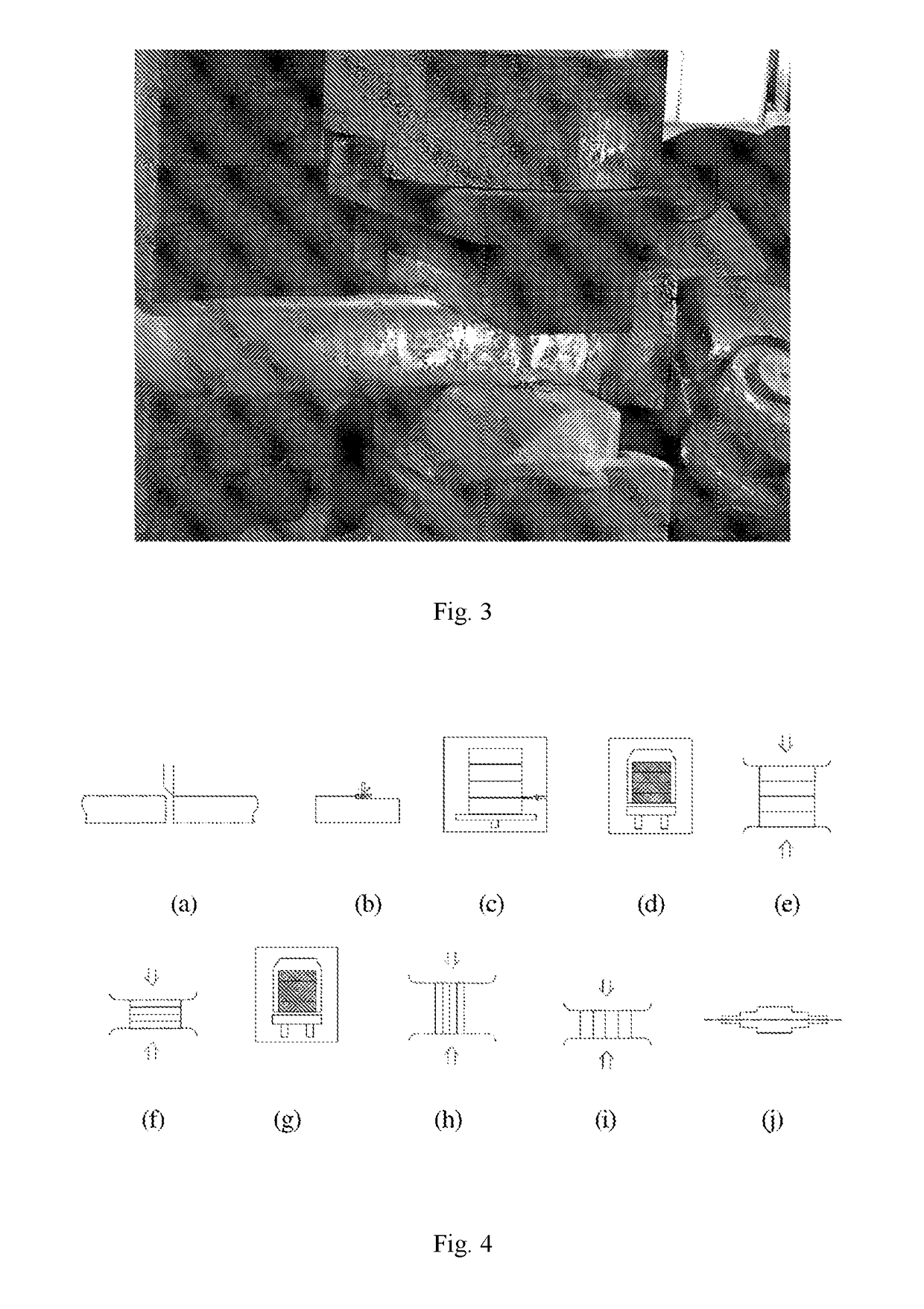Constructing-and-forging method for preparing homogenized forged pieces
a construction and forging technology, applied in the field of forging, can solve the problems of destroying material continuity, affecting mechanical properties of forgings, and microscopic shrinkage cavities and porosities, and achieve the effects of reducing the inclusion level, and improving the welding interfa
- Summary
- Abstract
- Description
- Claims
- Application Information
AI Technical Summary
Benefits of technology
Problems solved by technology
Method used
Image
Examples
exemplary embodiment 1
[0059]Using continuously casted method, the continuously casted slab billet with width 1200 mm and thickness 200 mm is casted. The steel is 25Cr2Ni4MoV and the chemical composition is listed in Table 1. This steel is commonly used for pressure vessel. Cutting the billet to a certain size, after machining and cleaning, sealing and welding the billets in the vacuum chamber and then forge it. The specific steps are as follows:
TABLE 1measured chemical composition of 25Cr2Ni4MoV steal (mass percentage, %)elementCSiMnPSCrNiMoVpercentage0.210.0390.270.0050.0051.643.460.390.095
[0060]A first step, cutting off the continuous casting billets according to a certain specification. Three pieces of 200×450×300 mm continuous casting billets are cut and stacked together. Making the dimensions of the stacked billets as width=300 mm, length=450 mm, height=600 mm, which can be easily forged in three directions.
[0061]A second step, machining and cleaning the surface to be welded. The surface to be welde...
experimental embodiment 1
[0088]Forgings in exemplary embodiment 1, comparative embodiment 1 and comparative embodiment 2 are sawed in the center line. Specimens of welded interface area can be got and corroded by nitric acid in alcohol. The specific macrostructure is shown in FIGS. 5, 6 and 7. It can be seen from the figures that the microstructure of the forging using the method of stacked continuous casting billet forge welding of the present invention are basically the same as that of the forging using conventional forging method. No abnormal microstructure is found at the original interface position, while compared with conventional forging method, the method of stacked continuous casting billets forge welding of the present invention can improve material utilization rate by 30%. Meanwhile, the interface has not been fully roll welded at the center of the billet produced by continuous casting billets cladding rolling method (FIG. 7a). During the first several passes of the multiple passes rolling, there...
PUM
| Property | Measurement | Unit |
|---|---|---|
| Length | aaaaa | aaaaa |
| Fraction | aaaaa | aaaaa |
| Time | aaaaa | aaaaa |
Abstract
Description
Claims
Application Information
 Login to View More
Login to View More - R&D
- Intellectual Property
- Life Sciences
- Materials
- Tech Scout
- Unparalleled Data Quality
- Higher Quality Content
- 60% Fewer Hallucinations
Browse by: Latest US Patents, China's latest patents, Technical Efficacy Thesaurus, Application Domain, Technology Topic, Popular Technical Reports.
© 2025 PatSnap. All rights reserved.Legal|Privacy policy|Modern Slavery Act Transparency Statement|Sitemap|About US| Contact US: help@patsnap.com



